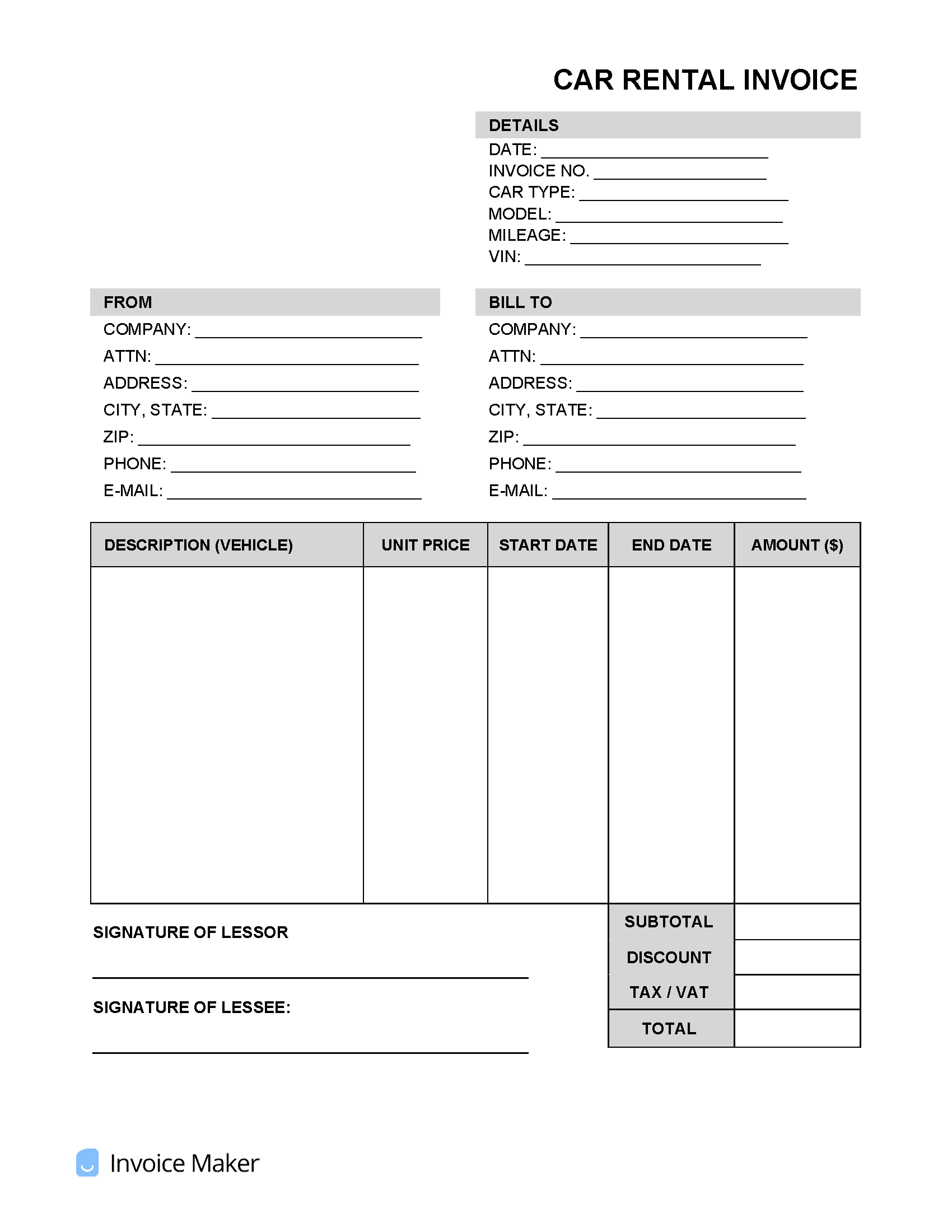Car Rental Invoice Template
A car rental invoice is a bill to collect payment from a customer who rented a motor vehicle for one (1) or more days. The cost charged to customers depends significantly on the type of vehicle selected, the taxes, the age of the driver, and most importantly, the number of days it was rented. Using an official invoice to document the details of the arrangement allows both the customer and the rental company to contact each other post-transaction if necessary and provides for the efficient organization of past invoices for accounting purposes.
What is a Car Rental Service?
A car rental service is a company that rents out vehicles of all sizes and configurations to customers on a per-day basis, with discounts often being offered for longer rental periods. Car rental companies are often situated near high-traffic or population areas, with airports being extremely common due to travelers not having access to a mode of transportation.
Factors for Pricing a Rental Car
For large car rental businesses, prices are generally mandated by company executives and are passed down onto the chains. This increases simplicity for customers, as they can understand the price they will be most likely paying no matter the location. However, this doesn’t withstand exceptions with highly popular locations or special deals a single chain may be operating. For small rental car companies, the prices that are set are completely up to their discretion. The following factors should be kept in mind when determining various pricing structures and add-on fees for a new car rental company: Drive Time
- Simply put, the longer the time the customer rents the car, the lower their rate should be. This is a common pricing method found in most rental industries, such as home renting, where longer-termed leases bargain a lesser monthly rate. The exact discount will depend on the desirability of rental cars in the business’ area of operation and the standard daily pricing set by the company. Another common pricing method in the industry is not charging by the hour but a minimum of a single day.
Booking Date
- Offering customers that book earlier a lower price should be considered standard, as same-day requests require more work and don’t allow for sufficient planning on behalf of the rental company.
Vehicle Type
- Larger and more exotic vehicles should garner a significantly higher rental cost than economy-sized or compact vehicles. This is due to their expensive purchase price and maintenance. For faster / sportier cars, charging a higher rate to account for the more aggressive ways customers drive the vehicle should be considered.
Fuel
- If the customer returns the vehicle with less fuel than what was originally in it, they should be charged for the cost of the gas plus an additional fee for the time and energy it takes to refill the vehicle.
Driver Age
- Customers under the age of twenty-five (25) should be charged a higher daily rate or an additional daily charge (between $20-$80) to account for the increased liability they pose. A policy that restricts drivers under the age of twenty-five (25) or twenty-one (21) is a commonly adopted policy among large and small rental companies. However, keep in mind that certain states prohibit rental restrictions based upon age; according to Enterprise, the following are age exceptions in the United States:
- Michigan – Minimum age of eighteen (18)
- New York – Must be eighteen (18) or older
- Government Employees – must display “official orders” to the rental company
